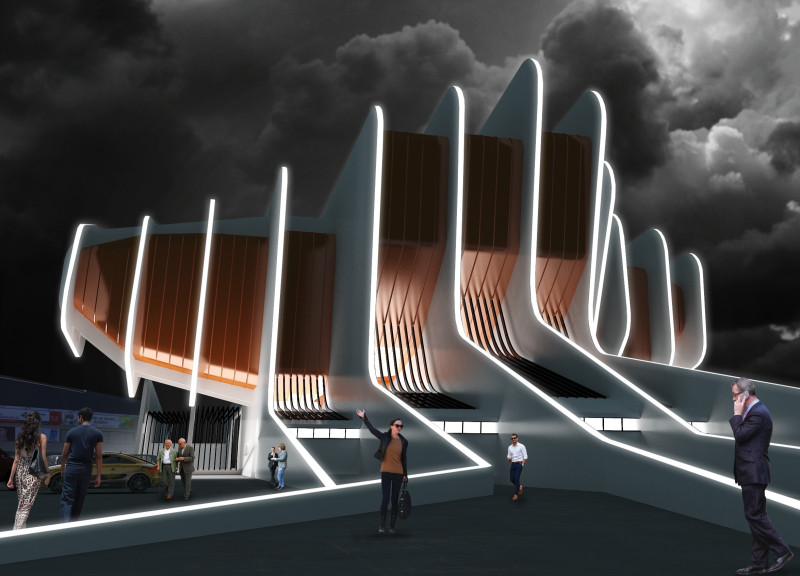5 key facts about this project
The project represents a commitment to creating a functional environment that also prioritizes community connection. It integrates aspects of both urban and natural settings, reflecting a harmonious balance that enhances user experience. The architecture considers not only aesthetics but also practical aspects of daily usage and environmental interaction.
Fluid Design Language
A key characteristic of this project is its fluid design language, which sets it apart from typical contemporary structures. The building’s exterior is defined by sweeping curves and angled elements, establishing a distinctive identity in its urban context. The integration of materials like slatted metal panels and glass creates a visual interplay that promotes transparency, allowing light to penetrate and enhancing the internal atmosphere.
The building incorporates features such as green roofs and terraces that contribute to sustainability. These elements not only serve as functional outdoor spaces but also play a role in regulating the building's microclimate. The strategic placement of windows and openings allows for natural ventilation, reducing reliance on mechanical systems and promoting energy efficiency.
Interior Functionality
The interior design focuses on flexibility and adaptability, essential for accommodating a range of activities. The auditoria can be transformed to suit different event sizes and formats, offering adjustable seating configurations. Common areas are designed to facilitate informal gatherings and provide access to amenities.
Natural light is maximized through expansive glazing, reducing the need for artificial lighting during the day. The integration of acoustic materials ensures sound quality is maintained, particularly in performance and meeting spaces. Overall, the architectural design emphasizes user comfort while maintaining functional integrity.
To gain deeper insights into this architectural project, the presentation details such as architectural plans, architectural sections, and architectural ideas are available for further exploration. Understanding these elements will provide a comprehensive view of the design's intent and execution.


























